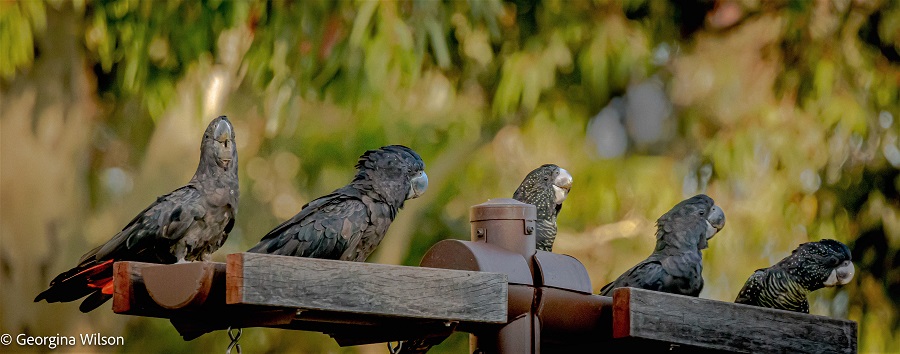The young Ngoolark and the heat wave
Several years ago, after some very hot days, over 200 Ngoolarks from at least two separate flocks were found dead on the ground. Investigations revealed they had likely died from heat stress. Access to water could have saved them.
One of the younger birds was known to researchers. It been recorded as a chick (called a ‘nestling’) during health checks of nestlings in their nest hollows. Black cockatoo scientists had put a leg-band on it, so they would know it if they ever saw it again. Black cockatoos can live for 50 years. This young Ngoolark was just over one year old when it died.
In Perth, it is hard for Ngoolarks to find enough clean, fresh water. The risks will increase as Perth becomes hotter with harmful climate changes. The summer of 2021-2022 was the hottest summer ever recorded in the Perth-Peel region. It is important to act now to help address the threat of heat stress for our Ngoolarks and all birdlife.
Introducing the 'Cockitrough'
For councils, workplaces and community groups interested in giving clean water to Ngoolarks, one excellent option is the Cockitrough, designed and supplied by the Town of Victoria Park.
Each Cockitrough has several shallow-water drinking platforms, self-flushing to keep water clean, and high off the ground to protect birds from cats and dogs.
Excitingly, the Keep Carnaby’s Flying – Ngoolarks Forever project has bought several Cockitroughs. We are installing these in collaboration with selected local government authorities, in key areas for Ngoolarks in those local government areas.
Several Cockitroughs have already been installed around Perth. They provide a wonderful opportunity to observe Ngoolarks and other endangered native birds, as they gather to drink fresh water safely.
Where should Cockitroughs go?
To be sure they help black cockatoos, a Cockitrough should be installed as close as possible to (preferably within 1km of) areas where black cockatoos are known to roost or feed. The location should be a quiet place, away from traffic, carparks, and places with too much human or dog activity.
What can you do to help?
Take home points:
- Look for safe places to provide shallow clean water for native birds
- Check out the Cockitroughs – and ask your council, school or workplace to get one!

Image credits: Georgina Wilson. Thank you to birdlife photographer
Georgina Wilson for sharing unique pictures of the bird waterers in
full action and giving us permission to use some of her images on our
website.